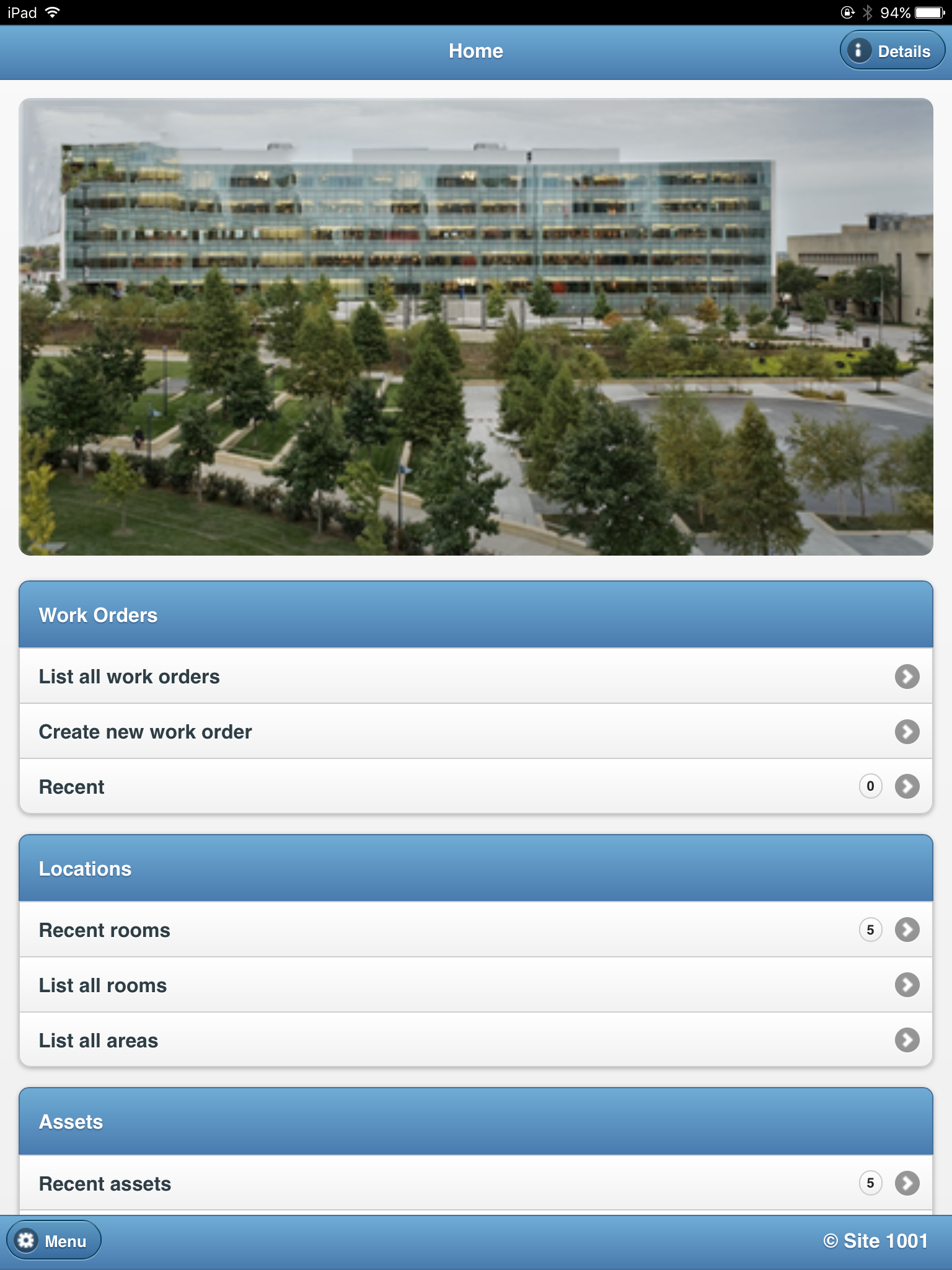During his tenure as a Vice President with Kansas City, Mo.-based general contractor J.E. Dunn Construction Co., Eric Hall began investigating methods to optimize the value of construction-related handover information to the building’s owner and facilities management staff.
“The majority of money spent on buildings occurs during operations,” said Hall, who has indicated owners spend four to five times a building’s original construction costs to manage and maintain the facility over its lifetime. His goal: to leverage information to reduce spending and extend the life of the building.
The result is Site 1001, a smart building maintenance and management platform spun off from J.E. Dunn in 2016, with Hall, an architect, serving as founder and Chief Innovation Officer. Along with sensor data and artificial intelligence (AI), the cloud-based, mobile platform deploys facilities information ranging from 3D models and photos to vendor submittals to generate actionable, real-time data that eliminates waste, including energy consumption, detects anomalies in system components, and identifies potential problems before they occur. Integration features allow the system to connect IoT gateways, building automation, enterprise asset management, among other platforms.
In just a year, Site 1001 has garnered significant attention in a market rife with smart building systems and devices. Among other achievements, the company has raised $11 million in Series A and A1 rounds.
-

Heavy Spending: “The majority of money spent on buildings occurs during operations,” said Site 1001 founder and Chief Innovation Officer Eric Hall. Site 1001 promotes a smarter solution to reduce spending and extend the life of the building.
What follows is a discussion with Hall about Site 1001‘s current activities and the future of smart buildings.
August has proved a busy month for Site 1001, beginning with an influx of $6 million in Series A1 funding, bringing total investment in Site 1001 to $11 million. What plans does Site 1001 have for the latest round of funding?
EH: Some of the funding will be allocated toward collecting data among similar buildings, the goal being to optimize the performance of a particular building type by discovering how each building has performed historically, normalizing the data, and performing a granular analysis of it with IoT devices.
The ultimate intent is to utilize the information to predict a system failure rather than respond to one after the fact.
Earlier this month, Site 1001 announced plans to open a new office and innovation center in Raleigh, N.C. this fall. What can you tell us about the initiative?
EH: The facility will serve as one of our living labs, the intent being to engage people and enterprises interested in smart buildings and smart cities. The facility will provide them an opportunity to see our technology in action, in this case with a manufactured custom wet wall, meaning a wall visibly equipped with attendant plumbing fixtures and drains. We’ll use the wall to simulate leaks and flush systems to rid water fixtures of pathogens, among other activities.
Plans also are underway to open another living lab in Las Vegas in October with a focus on similar conditions such as moisture detection, automated shut off valves, pathogen flushing and so forth. We also have plans in the works to open labs in Kansas City and San Diego.
-

On watch: Site 1001 provides custom reporting of clear and precise collected data and the evolution of system performance over time, in this instance for chillers and pumps.
You’ve indicated the labs represent a step toward promoting creation of smarter cities. In what way?
EH: When governments, businesses and citizens think of smart cities, they think of smart street lights or infrastructure, without recognizing, for instance, that buildings frequently are a city’s single largest consumer of energy. To create a truly smart city, it’s time to bring buildings and building performance into fold. Buildings are essential components of smart cities.
Smart building analytics have expanded tremendously in recent years, having transitioned from monitoring a few pieces of critical equipment to collecting and analyzing data on numerous components. What’s driving interest and growth in analytics?
EH: A shift in thinking among building owners and operators, who typically placed more emphasis on monitoring assets that cost the most money rather than those that kept the building functioning. As an example, they would concern themselves with the performance of the boiler that cost $1.5 million without similarly considering the sump pump that cost $350. The reality is that a failing sump pump can cause considerably more expensive damage than a failed boiler.
TO CREATE A TRULY SMART CITY, IT’S TIME TO BRING BUILDINGS AND BUILDING PERFORMANCE INTO THE FOLD
– Eric Hall, Founder, Chief Innovation Officer, Site 1001
What steps does the industry need to take to build on optimizing building performance, reducing costs, and anticipating and addressing problems before they occur?
EH: There are two ways of looking at it. How can we improve what we’re currently doing and what technologies do we need to develop to compensate for building operators with limited skill sets? Ideally the information the technology generates would be prepared for the particular operator that is going to use it.
-

It’s a snap: Tablets and other mobile devices visually depict the facility while providing quick to common functions and items such as work orders, unique rooms and specific assets.
Speaking of new technology, Site 1001 incorporates artificial technology it has named Carl. What types of tasks does Carl perform to optimize facilities management?
EH: Carl collects data information to determine performance relationships that it can process to predict a failure. It performs predictive analytics. A building’s heating system incorporates dozens of pieces and equipment from multiple manufacturers. Carl collects maintenance information and other data from those components and, with an understanding of the performance and relationships among them, detects anomalies prior to failure. It also logs a failure for purposes of comparison in order to prevent future failures.
In what other ways do you see smart buildings evolving?
EH: Greater systems integration, or what we refer to as orchestration, in which, say, a light bulb recognizes it requires replacement, orders the replacement and alerts facilities management about the situation. We’re already achieving that level of integration with Carl.
What are some of the benefits that Site 1001 confers that other facilities management platforms don’t?
EH: Site 1001 is focused on remediation of systems failure. Think of it as the difference between letting a pipe overflow or detecting the problem before it occurs and turning off the pipe until facilities personnel arrive to address the problem.
So, would you agree that smart building technologies are transitioning building owners from a reactive mode to a proactive mode, as some have suggested?
EH: Absolutely. It’s the difference between predictive analytics and run to failure. Predictive analytics allows an owner to fix a problem before the building’s occupants are aware of it.


Discussion
Be the first to leave a comment.
You must be a member of the BuiltWorlds community to join the discussion.